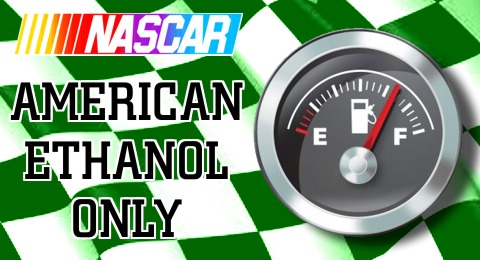NASCAR made it through Daytona with some wet shoes and a new Tide commercial. The rain delay and the Montoya fire almost seemed to open the garage for a fresh start at Phoenix. The second points races of the season would seem to a perfect shot at gathering some useful information about changes put in place for 2012.
Fuel injection. Beyond the added costs of the initial change that hit some of the smaller teams with replacing manifolds and adjusting setups, the fuel injected engines seem to be in the groove with the carbureted systems. NASCAR and the teams should be able to utilize more detailed data from onboard computers monitoring and controlling fuel flow but performance should be similar. At speeds and throttle on and off situations encountered for racing there may be some fuel savings but it will not be enough to alter the timing of fuel pit stops. It may give engine builders some good information toward tuning for specific tracks or driving styles. However, NASCAR also intends to closely monitor these types of modifications to keep racing fair from car to car and track to track. Anything out of the ordinary will show up on post race inspections.
The differences from the carbureted engines to fuel injection will likely be an evolving learning curve. Phoenix may be the first real shot at gaining useful information on how it can be utilized by the drivers during a race and for the teams back in the garage.
Spoiler sizes and radiator changes introduced leading to Daytona in an effort to reduce the “two car draft” and create more of a traditional pack racing style won’t be really evident except at the high speed super speedways.
Most of these kinds of changes won’t be noticed by your average race fan. Daytona showed a bit of the two car style but for the most part the race ran in the pack. Not that anyone really noticed with that huge fireball…
Some other differences in the Nationwide Series are somewhat odd. Considering body shapes and chassis design the changes are realistically simply cosmetic in nature. The cars sporting the Dodge marker are “Challengers”. The cars with Ford are “Mustangs”. This carries over from last season, which is fine. Really…
But the Chevys are Impalas and the Toyotas are Camrys… Just as they are in Sprint Cup. Cup races use the Charger for Dodge and the Fusion for Ford. Really…
If Nationwide is running a Mustang, why not the Camaro? Toyota really doesn’t have a “sport” model so they would be stuck with a Corolla if you followed through with separate models for the series. Or a Yaris… Or they keep the Camry in Nationwide and run the Avalon in Cup.
We just ask the questions…
Beyond Mustangs and Chargers… NASCAR continues to push hard on the environmental wall. Biofuels, recycling and fuel injection are on the forefront of an image changing philosophy. Already, the sport leads in recycling of materials. Biofuel technology from Sunoco keep the laps turning while working with a 20% increase in efficiency from just a few years ago.
NASCAR is on the “green” train and vows to do more in the future. Who knows…? Maybe we will see the Yaris on the track…
